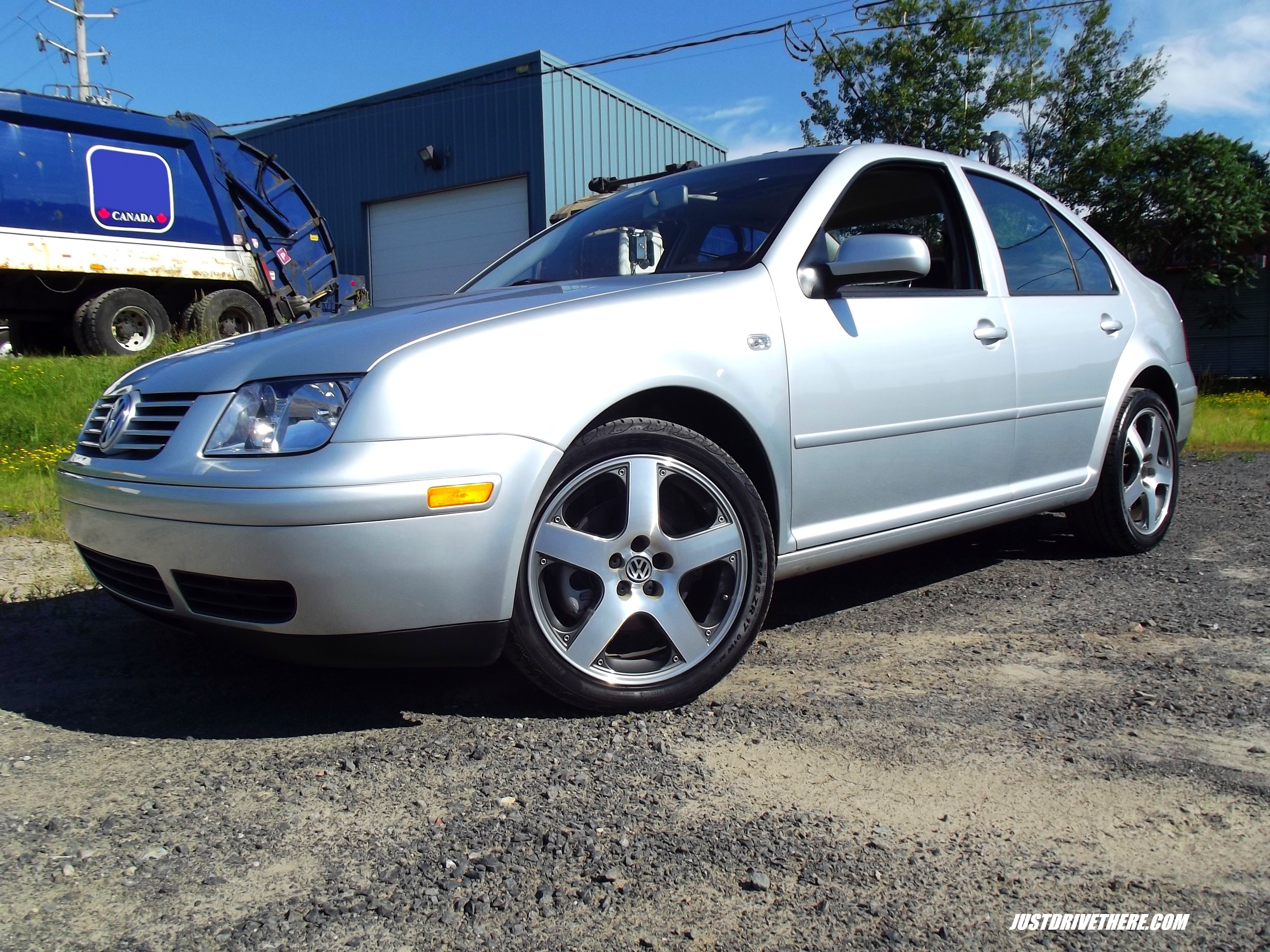Volkswagen. The name conjures images of reliable, well-built cars. But beyond the everyday models lies a history of engineering surprises and a dedication to performance that often flies under the radar. While many know about iconic models like the Golf GTI, Volkswagen has also produced less heralded gems, cars that offer a unique blend of practicality and punch. Enter the VW Bora Jetta VR6 GLI, a car that perfectly embodies this understated performance ethos.
You might be familiar with Volkswagen’s penchant for pushing boundaries. Consider the Phaeton, their audacious attempt to challenge luxury giants. But even before that, Volkswagen aimed to inject performance into more accessible segments. They had the Passat, a solid contender in its class, but they sought to broaden their appeal, even targeting the BMW 3-Series with a car that, on the surface, seemed anything but a direct rival: the Jetta, known as the Bora in Europe.
To take on such a formidable opponent, Volkswagen needed more than just a standard engine. They needed something special, something potent yet refined. Their answer was the VR6 engine. This wasn’t your typical V6. The VR6, short for “Verkürzt Reihenmotor Sechs” (short inline engine six), is an ingenious design. Imagine a straight-six engine, but with the cylinders angled at a narrow 15 degrees. This “straight V6” configuration results in a remarkably compact engine, small enough to fit transversely in cars like the Golf and, crucially, the Jetta. This innovative engine design paved the way for future VW powerplants, including the W engines found in high-performance models like the Bugatti Veyron.
The VR6 engine first debuted in the third-generation Golf VR6, making waves with its smooth power delivery and distinctive sound. It later powered the legendary Mk4 Golf R32 in a larger 3.2-liter form. For the Jetta VR6, Volkswagen opted for a 2.8-liter variant, producing a healthy 200 horsepower and 264Nm of torque. While these figures might seem modest by today’s standards, back in 2003, they were more than enough to make the Jetta VR6 a genuinely quick car. The 2003 model year also brought an updated VR6 engine with 24 valves, replacing the earlier 12-valve version. This upgrade boosted power by 25bhp and gave the engine a more eager, rev-happy character. Coinciding with this engine update was the introduction of the GLI trim, replacing the GLS as the performance-oriented Jetta.
A front profile view of the 2003 VW Jetta VR6 GLI, showcasing its understated sedan design.
The Jetta VR6 GLI I had the chance to experience was indeed the performance-focused version. In 2003 and onwards for the Mk4 generation, Volkswagen offered two VR6 trims: the GLI and the GLX. The GLX was positioned as the luxury variant, equipped with an automatic transmission and leather upholstery. The GLI, in contrast, was the driver’s car. It came exclusively with a manual transmission and a more functional interior, prioritizing the driving experience. For enthusiasts seeking engagement, the GLI was the clear choice.
A side shot of the 2003 VW Jetta VR6 GLI, highlighting its sporty wheels and subtle performance cues.
Volkswagens are sometimes criticized for their conservative styling. However, the Jetta GLI demonstrates that understated doesn’t mean bland. It’s a design that rewards closer inspection. It’s easy to imagine Volkswagen engineers in the 90s crafting the GLI as the ultimate “sleeper car.” At first glance, it simply looks like any other Jetta. The design isn’t overtly flashy, but it has aged gracefully. Look closer, though, and the subtle performance cues emerge: the sporty exhaust, the attractive 17-inch wheels, and the supportive semi-bucket seats with noticeable side bolstering. Inside, details like the 260km/h speedometer and the 6,500rpm redline hint at the car’s true nature. The Jetta GLI is all about subtle performance enhancements. Even lifting the hood reveals a large plastic engine cover, initially suggesting a smaller 1.8-liter four-cylinder engine. It’s only when you turn the ignition key that the VR6’s true character is revealed.
The exhaust note is the unmistakable sound of a refined six-cylinder engine. It evokes comparisons to the renowned BMW straight-six and only slightly trails behind the legendary Alfa Romeo Arese V6 in terms of auditory pleasure. As the revs climb, the sound intensifies into a satisfying, controlled roar. Behind the wheel, the Jetta GLI transcends its Golf-based origins. The steering is nicely weighted, the manual gearbox is precise with short, satisfying shifts, and the ride strikes a good balance – firm enough for spirited driving, yet comfortable for everyday use. The suspension effectively absorbs road imperfections, a welcome departure from overly stiff “sports suspensions” found in some cars. The VR6 engine itself is remarkably smooth. Even in 5th gear at low revs, a simple press of the accelerator delivers effortless acceleration.
A detailed view of the 2.8-liter VR6 engine in the 2003 VW Jetta VR6 GLI, showcasing its compact design.
This effortless performance is thanks to the engine’s ample torque. On the highway, the Jetta GLI excels as a mile-munching machine, making overtaking effortless. While the author’s previous Golf was considered a capable long-distance car, the Jetta GLI operates on another level of touring comfort. The interior prioritizes function over outright style, reflecting Germanic practicality. It’s well-equipped with features like heated seats, power windows, a sunroof, and air conditioning. However, the test car, assembled in Mexico, did raise some questions about long-term durability compared to its German-built counterparts. With 189,000 kilometers on the odometer and being just ten years old at the time of the review, issues like a leaking windscreen and a malfunctioning handbrake were noted. These could be isolated incidents or indicative of potential build quality differences. For owners considering a used Jetta GLI, a thorough pre-purchase inspection, particularly focusing on common Mk4 generation issues and potential VR6 maintenance needs, is highly recommended.
While the Jetta GLI shines as a comfortable and quick highway cruiser, its performance envelope changes when pushed on twisty roads.
An interior shot of the 2003 VW Jetta VR6 GLI, highlighting its functional design and sporty seats.
In corners, the Jetta GLI exhibits noticeable body roll, and the front end doesn’t feel as precise at higher speeds, even with the aftermarket front anti-roll bar fitted to the test car. Understeer is prevalent, partly due to the weight of the VR6 engine over the front axle. At 1.4 tons, it’s not a lightweight car, a trade-off for its comfortable touring capabilities. This difference in handling is a key reason why the Jetta VR6 couldn’t truly rival the BMW 3-Series in outright sportiness. Push a BMW 3-Series, and it responds with agility and driver engagement. The Jetta GLI, while competent, never quite shakes the feeling that performance driving isn’t its primary mission. The front-wheel-drive configuration (North American Jetta VR6 models were exclusively front-wheel drive, unlike the European Bora V6 4motion with all-wheel drive) compared to the BMW’s rear-wheel drive also contributes to this difference. Ultimately, brand perception also played a role; the Jetta, despite its VR6 engine, couldn’t fully overcome the 3-Series’ established sporting image.
In conclusion, the VW Jetta GLI VR6 is a compelling car. It’s comfortable, genuinely quick, boasts a fantastic engine, and offers inherent Volkswagen reliability. Its “sleeper car” nature, blending in with ordinary Jettas while possessing impressive performance, is a significant part of its appeal. However, track-day thrills are not its forte. The real reason to consider a Jetta GLI VR6 is the VR6 engine itself. Experiencing the unique sound and smooth power delivery of a VW VR6 is something every car enthusiast should do at least once.
Considering working on your VW Jetta or Bora? A Haynes manual can be an invaluable resource for maintenance and repair. Check out options on Amazon.
[

